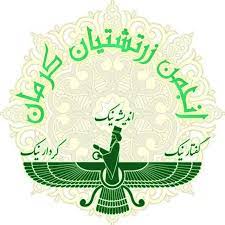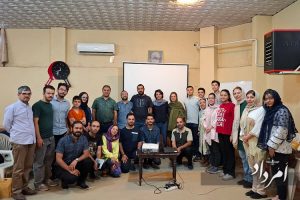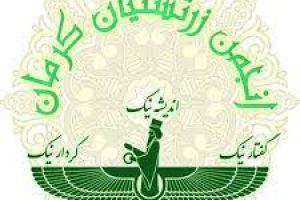The wall and the entrance of a Sassanid structure were revealed during the excavation of “Zaroband 2” hill in Arak.
According to ISNA, Mohammad Reza Nemati, the head of the archeology board of the Davoodabad area, said about this: The exploration of the “Zaroband 2” hill from the Davoodabad area, for research on the layers and their cultural sequence, clarifying the condition of the mountain from the point of view of architectural works and remains, and determining the function of the existing structure were done with the license of the research institute and the financial support of the General Administration of Cultural Heritage, Tourism and Handicrafts of Central Province. After a month of exploration on this hill, a part of the fence and the entrance of a Sasanian structure were found.
He added: “The walls of the stockade include two thick parallel walls with a width of 125 cm and a corridor between these two walls. The walls of this structure are made of bricks measuring 12x40x40 and 12x54x54 cm with white mud mortar. The clay used in the walls are also made from local soil are primarily of low quality, whitish and bright red color, with a significant amount of coarse sand and pebbles.”

The member of the academic board of the research institute of Cultural Heritage and Tourism said: All the surfaces of the walls and the floor of the corridor are covered with plaster, and in the eastern part of the trench, through an entrance, the hall leads to an oval shaped tower. Parts of its cradle shaped ceiling with an arch have remained intact.
This archaeologist added: The bricks used in the tower are 12 x 34 x 34 cm in size and smaller than the bricks of the walls, and to strengthen the tower’s wall, its outer part is filled with a whitish layer.
The head of the archeology board of Zaroband 2, stating that this structure was built on a stratum that is one meter above the level of the plain, said: According to the aerial and topographical images, the fenced hill and the exposed tower are the western part of the entrance to the structure, and it is believed that the eastern entrance is also the same.

This archaeologist added: Due to the deliberate abandonment of this structure in the excavations, no intact pieces are found, and the most important finding of the season is the remains of a clay tomb, which has many carvings on its outer body. In addition, some ram’s horns, bones of a boar, a knucklebones game, some tools, and many pieces of pottery were obtained.
He said: “As a result of this excavation, based on the stratification done and the evidence obtained, this hill belongs to a single era and belongs to the Sassanid period, which was filled with clay, layers, and soil at the end of this period and the beginning of the Islamic period and was abandoned entirely.”
The public relations of the Research Institute of Cultural Heritage and Tourism announced by quoting this archaeologist: According to the archeological and current findings, this building was not residential and seems to have been a structure with a religious function.
On the other hand, since the structure has remained intact, its exploration can provide new information about the Sasanian period of the eastern Zagros and the central plateau of Iran and the definite function of the structure. On the other hand, despite the form remaining healthy, its exploration can significantly help the presence of tourists in the region.
The area of Davoodabad is located four and a half kilometers north-west of Davoodabad city, on the suburbs of Arak city, and among agricultural lands and four kariz fields. Four hundred meters to the east of this hill, there is a large area of approximately 60 hectares, which contains rooms from the Sassanid period upto the mid Islam period. This hill was registered in the list of national monuments of Iran on 2/18/2018 with the number 1387.










